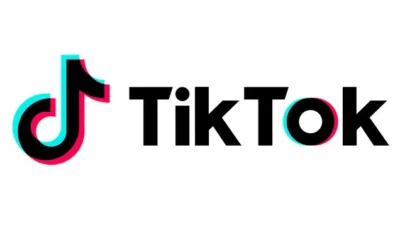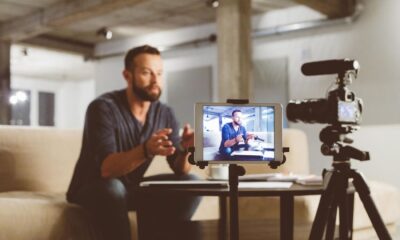There’s something we don’t often talk about in martech: the growing disconnect between martech leaders and practitioners. Many practitioners, the ones managing technology day-to-day, are working overtime to deliver projects and keep the marketing lights on. When this hard work goes unappreciated, these subject-matter-experts move on to another company – hard to blame them. But is this the whole story?
Martech leaders agree that martech professionals and marketing operations are the unsung heroes of the marketing department. But in speaking with them, we learn that the problem of underappreciation doesn’t fully rest on the shoulders of marketing leadership. The issue is multi-faceted, and when asked the question “What are key things you wish martech teams knew?” the responses are quite insightful.
While you may not hear these points out loud or in one-on-one meetings, it’s important to understand the perspective of martech leaders and how they think the problem should be addressed. Here are five key things martech leaders wish you knew.
Get the daily newsletter digital marketers rely on.
1. The perception of the martech team has to be shaped, and it starts with you
The team that owns martech (typically marketing operations) has not always had the best reputation. Other teams have thought of them as the “order-takers” or the “button-pushers,” or even the IT of marketing, another obstacle they have to overcome. While many practitioners complain about this and jump from role to role, hoping the next company will be a different story, they often overlook the proactive steps they can take to change this perception.
Where to start? Start by making sure your current projects are tied to the business’s top priorities. If they aren’t, reprioritize, or find ways to link them indirectly if you must.
Make sure the projects you are working on are top priorities for the business. If not, find out how to link them, at least indirectly. Also, emphasize the downsides or negative impact if these projects are not put in place.
Find an opportunity to show off: most martech professionals may hide behind their technology, but this is the opposite of shaping perception. Put together a quarterly business review, schedule a presentation or start a biweekly newsletter highlighting all the great results martech generates.
2. Understand the dangers of opportunity cost
Here’s an interesting analogy: pretend there is a mix of bills spread across the field, in increments of 100s, 20s, fives, and ones. With limited time, which bills do you go after first?
Unfortunately, many martech teams spend their time working on projects worth fives and ones versus those worth 100s. This example brings stark reality to the meaning of opportunity cost: spending time on something with little value at the expense of pursuing something with higher value.
Nick Bonfiglio, founder and CEO of Syncari, says it like this: “Focus on quality over quantity every time.” To his team of martech operators, he says, “you can test programs that generate engagement, but what I want you to really focus on is initiatives that drive qualified opportunities. Spend your time on projects that will create opportunities with an above 25% close rate minimum.”
Does that mean his team never experiments? Never tries anything new? Quite the opposite, the Syncari team reserves time for innovation. The key difference is they are judicious about the majority of their project work.
3. Translate martech success to business outcomes
Here is another problem that plagues martech teams everywhere: doing great work that their stakeholders don’t understand. Years ago, I spent an entire month migrating a lead routing system from a decentralized model to a single, centralized workflow. After sharing this accomplishment with the larger team, I was met with many blank stares.
What was I missing? I needed to explain how the project would impact their work and the business at large in simple terms. Once I shared how the new lead routing cut their campaign management time by 25% and virtually eliminated all of the lead management errors they were experiencing, they sat up much straighter and appreciated the work being done.
“Figure out what your work will unlock for stakeholders,” says Jessica Kao, director at F5 Networks. “This is what I tell my team: If you are building something or implementing a new tool, communicate how it will translate to more leads, meetings, pipeline and revenue. We might be doing the right things, but being able to tie it back to the business reason is the key to success within an organization.”
Like Jessica says, take a look at your work and explain how it will impact the business. Explain how investments in data will turn into better targeting and better personalization. Articulate how investing in a new platform will improve productivity by 20%. Translate martech work into business results, and you will be on the right track to martech success.
4. Team structure isn’t as important as vision, goals and accountability
Should you organize your team into a revenue ops team or keep sales ops and marketing ops separate? While there are varying benefits for each organization, the truth is that any structure you choose will fall apart without an overarching vision for sales and marketing success.
Here is the truth: at micro-startups, sales and marketing are naturally connected because the entire team is only a handful of members. At the enterprise level, there is a high volume of projects requiring specialization that may not need input from other groups as frequently as with smaller organizations, though alignment is always critical.
You don’t have to be in revenue operations to help sales. “I want my teams to know that it is important to empathize with sales,” says Thao Ngo, SVP of marketing at Allocadia. “Sales is laser-focused on their current deals and don’t have the time to read all of our marketing material. Make it easy for them: summarize key points, consolidate all resources for them in one place, and identify ways for them to hit their targets.”
So what principles should guide us when so many different structures can work? Leaders should set the organization’s vision and goals that are shared widely and operationalized in everything. For example, revenue goals should be set by both sales and marketing, approved by top leadership and broken down into sub-goals that each team commits to. Customer experience goals should be the same way – sales can look at referrals or upsells, while marketing may set CSAT or NPS goals.
Read next: More on marketing operations from Darrell Alfonso
5. If you are constantly drowning in work, stand up and look around
What’s a common refrain from martech and marketing operations teams? That there is way too much work to do in too little time. How do martech leaders respond to this?
“It’s true that martech teams are busy,” says a top executive at a mid-sized SAAS enterprise. “But to be honest, everyone in high-growth organizations has too much to do. Effective teams will carefully weigh the different initiatives in front of them and focus their energy on where they can get the most return on their money and time.”
Unfortunately, while it is true that marketing operations teams everywhere could use more resources, many are spending time on low-value tasks.
My recent LinkedIn post on the importance of prioritizing high-value tasks at the expense of low-value tasks was met with general agreement, but there were one too many comments, such as:
“Well, what if my low-value projects turn into high-project later on?” and “It’s not all about the numbers, you know.”
To that, I can only sadly shake my head – any effective leader knows that low-value projects don’t magically turn into high-value projects, and those that do were not scoped and appraised correctly. It’s hard to truly look at your work, evaluate projects’ impact, and make hard decisions to determine what you will and won’t do. Making smart tradeoffs is an effective leader’s mark, especially in martech.




















![How to Use AI For a More Effective Social Media Strategy, According to Ross Simmonds Download Now: The 2024 State of Social Media Trends [Free Report]](https://articles.entireweb.com/wp-content/uploads/2024/04/How-to-Use-AI-For-a-More-Effective-Social-Media.png)


















You must be logged in to post a comment Login